102. Going round in circles
The navigational simplicity of a circular walk.
Dear Reader,
On a rainy afternoon in the Lake District last month, where we were on a short break after a series of shoots at historical Roman sites on Hadrian’s Wall, Jim suggested a walk at Tarn Hows.
‘It’s not as challenging as that sheer drop you dragged me up this time last year, but I think we’ll enjoy it. I gather it’s an easy two miles.’
The car park – free to us as National Trust members – wasn’t at all far from the tarn, nor, to our relief, was it crowded. We parked the van in the prettiest spot we could find, and I grabbed my rucksack, popping our flask mugs into its exterior pockets.
‘Do we need those?’ asked Jim. I rolled my eyes. ‘Well, I want mine, and I’m not sharing. On that basis, yours is coming too.’
The path around Tarn Hows looked brand new. Our previous walks in the Lakes going from the year dot, right up to last year’s near-vertical trek to Stickle Tarn, had been on little more than sheep tracks, but this surface was something else entirely.
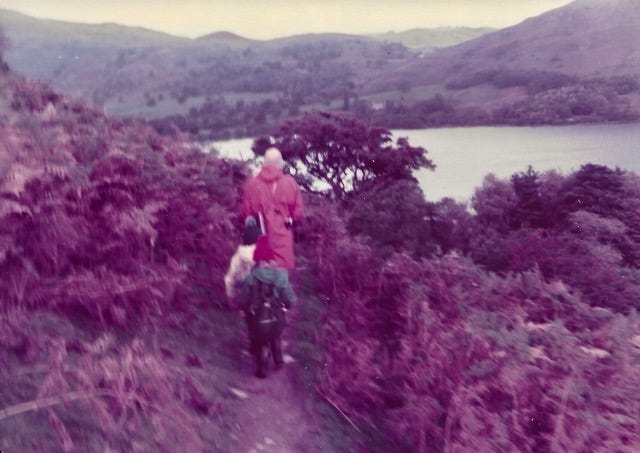
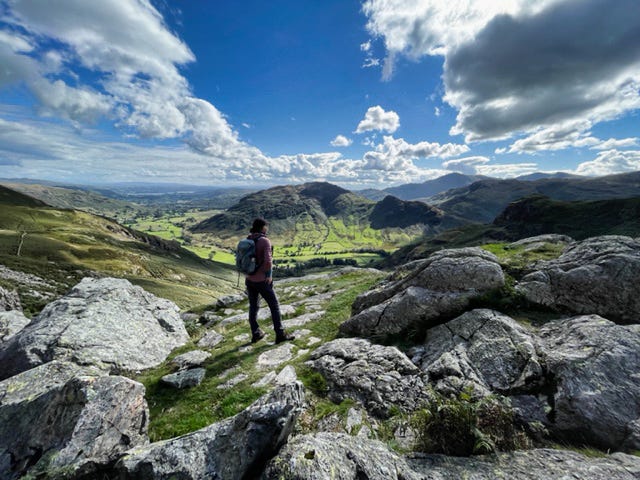
Our straight-line path from the car park ran out, and ahead of us was a new path set perpendicular to it. Jim asked me which way we should go.
‘You mean left or right? I’ve no idea – you’ve planned this walk! I don’t know where we’re going!’
‘No, clockwise or anti-clockwise! This…’ he pointed to where he was standing ‘…is both the start point and the finishing line. Which way we go is up to you. We’re walking round the tarn.’
Reader, why hadn’t he said so?
I strode ahead of him, bearing right. ‘THIS way, then!’ I yelled over my shoulder.
‘Even you can’t get lost walking around something!’ he yelled back at me.
Then, more quietly, almost a mutter: ‘Although clockwise would have made more sense.’

I’m a creature of habit. When I’m walking with somebody I like to be on their left, and when it comes to walking around something I like to go anti-clockwise.
I wonder if my left-handedness has something to do with it?
At school my right-handed best friend Jo and I would sit together in all our classes. Each desk would seat two, and she’d be on the left while I’d be on the right. Given that we would naturally look in the direction of the hand we were each using to write with we found plenty of opportunity to engage in childish whispered giggles and conversation, a luxury not afforded to the pairs of right-handers at all the other desks.
I simply favour turning towards my dominant side. I’m not just left-handed, see, but left-footed too, and I think I just find a left turn more comfortable than a turn to my right. Embarking on a circular walk anti-clockwise, then, was a no-brainer. Literally. No brain involved at all: this was a feel thing.
And it seems that I have company in the sporting field. For track athletes a 400m circuit is an anti-clockwise challenge.
I had a look online to see what I could find about why. Wired868.com provided the following insights:
Running in an anticlockwise direction, you only make left turns. The human body is slightly heavier on the left side because of the location of the heart. Thus, when running anticlockwise, the body tends to incline ever so slightly towards the left, giving the runner better control and increased speed.
Contributors to this Sporting Life thread on The Guardian’s online notes and queries pages had these explanations to offer:
Because of the effect of the Earth’s rotation, an athlete running anti-clockwise will have a slight advantage, resulting in a faster time. In the Southern Hemisphere, this effect is reversed but, as the sport grew up in the Northern Hemisphere, anti-clockwise races have remained, despite the international status of athletics.
Peter Brown
Information from one contributor claiming that chariot races in the Circus Maximus of Rome were run anticlockwise resulted in this counter-comment:
Now that chariot races have been mentioned, is it not possibly due to the predominant right-handedness of our species? Overtaking with a long whip in the right hand would be less likely to cause havoc by whipping the wrong horse (or rider)!
Roger Franklin
And finally:
The ancient Greeks may have run anti-clockwise round their stadia, but it is a mistake to assume that the tradition was unbroken until modern times. Contemporary illustrations show that when running on tracks was revived in the nineteenth century, clockwise running was probably just as common. Oxford and Cambridge universities ran clockwise - Oxford until 1948, Cambridge until some time later. The first modern Olympic Games in Athens (1896 and 1906) and Paris (1900) used the clockwise direction, but in 1906 there were complaints, as many countries had by then settled for the anti-clockwise practice. From 1908 the Games have all been run 'left hand inside'.
Peter Lovesey
The footpath was great; with it being so much wider than the antisocial single-filers we’d walked on earlier in our trip, we found ourselves at last with enough space to walk next to each other.
This was a relatively short walk of just two miles, but it was nevertheless spectacular.
I heard the sound of geese really close and looked up expecting to see a skein flying directly overhead.
‘Up high, high, high!’ said Jim. ‘Really high!’
And there they were, two large skeins of geese – a pair of perfect vees in the sky at a distance of what seemed like miles above me.
V. Sharp as an arrowhead, fleet of shape, strong and graceful as the birds themselves. I thought back to our Roman shoots just a few days before.
V for victory.
Veni.
Vidi.
Vici.
The Romans had come, seen and conquered. And those vees of geese, recent migratory arrivals from cooler, more northern climes, were in the process of conquering their warmer winter territory.
Our walk, though, was about a different shape: not a vee but a circle.
I was glad to see that the signage had read the brief. Footpath signs, you see, are round. Each is printed with a single arrow in the centre and the name of the walk or landmark being waymarked printed four times around the circumference. Regardless of the direction in which the arrow is pointing, it is easy to see the text in relation to what is being pointed at.

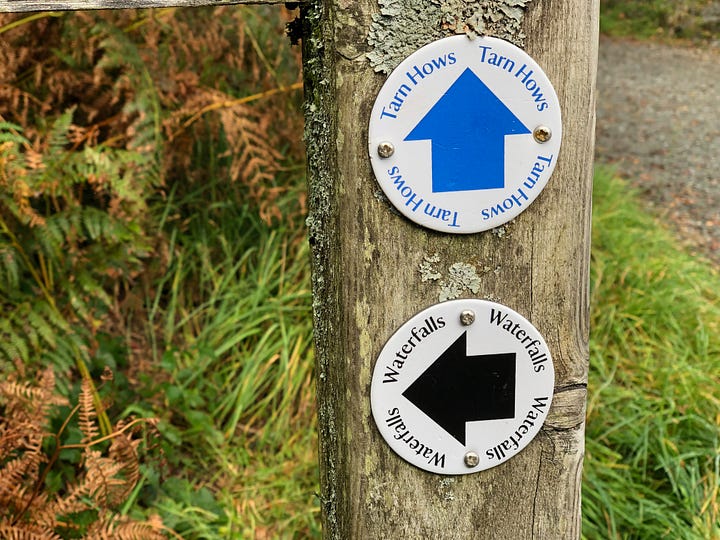
Soon it was time for a break to sit and watch the rainy ripples spread across the tarn.
‘There’ll be something to sit on to have our cuppa in a minute’, I told Jim. ‘A tree stump or something.’
And there was. Rounding a corner of the already curvy path we spotted a fallen beech tree. Far from being a comfy seat, though, this trunk had texture.
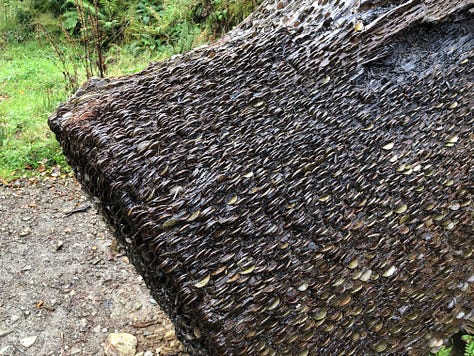

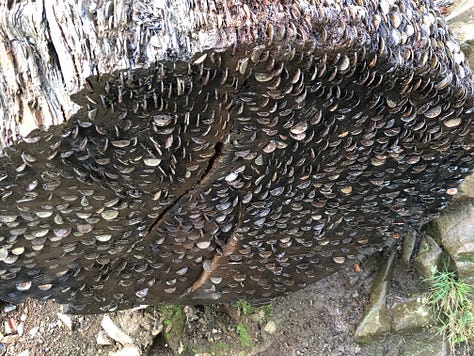
At first glance the tree looked to be sprouting hundreds and hundreds of tiny bracket fungi of identical size and colour. On closer inspection, though, what was growing on this tree was money, not mushrooms. Coins.
I fished our flask mugs out of the pockets in my rucksack, and, as we drank our tea, Jim and I took time to see what we were really looking at.
The coins were wedged fast, each buried to leave only a semi-circle showing. Some were bent. Most were copper-coloured 2p pieces, but there were some occasional gleaming specimens of our smaller, more precious, 5p piece, as well as several international coins.
I’d never seen – nor even heard – of such a thing. ‘Why?’ I asked Jim. ‘What even is this?’
I looked up ‘Tarn Hows money tree’ later, and it turns out that hammering coins into trees is not uncommon, with recipient trees called ‘wish trees’, ‘wishing trees’ or ‘lucky trees’.
I ran my fingers across the rain-wet coins: they were cold, but their curved edges, like our walk around the tarn, were smooth and gentle. I didn’t add a coin to the collection, but what if I made a wish anyway? Would that be theft? Is wish fraud a crime? 🤔
Reader, I didn’t make a wish. I didn’t need to. Standing sipping my tea on a circular path on which I couldn’t get lost, listening to the sounds of the geese and watching gentle raindrop ripples spreading their way across the calm water, there was nothing else in the world that I wanted.
Love,
Rebecca
📚 Recent reads 📚
Here are some of my recent highlights in the Substack reading stakes:
📚 It is not for nothing that
named his newsletter ‘Eclecticism’. In this latest edition of his regular ‘Start the week’ posts he gave his readers a book review, amusing insights into an overheard conversation and a brilliant fly-on-the-wall description, illustrated by one of his hilarious cartoons, of a recent meeting with a stranger he’d first met online.Regular readers of ‘Dear Reader, I’m lost’, will recognise Terry as the recipient of my ‘Letters to Terry’. My next such letter will be published next Wednesday, and it is likely to contain a fly-on-the-wall description of my own recent meeting with a stranger I had first met online. 😉
📚 The Doodlebugs created by artist
are among my favourite characters of hers, and her post about her new artbook ‘Shapes by Doodlebug’ is a stunner. It even contains a free pdf download of the book itself. Thank you, Sue! ♥️📚 This lovely post by Bryn Robinson of
is not a recent read; Bryn had published it back in July. I keep finding myself coming back to it, and I’d love you to read it too.’Sometimes, all it takes is a handful of beans to create some magic.’ 🌱
If you’ve enjoyed this post, please let me know by clicking the heart. Thank you!
Thank you for reading! If you enjoy ‘Dear Reader, I’m lost’, please share and subscribe for free.




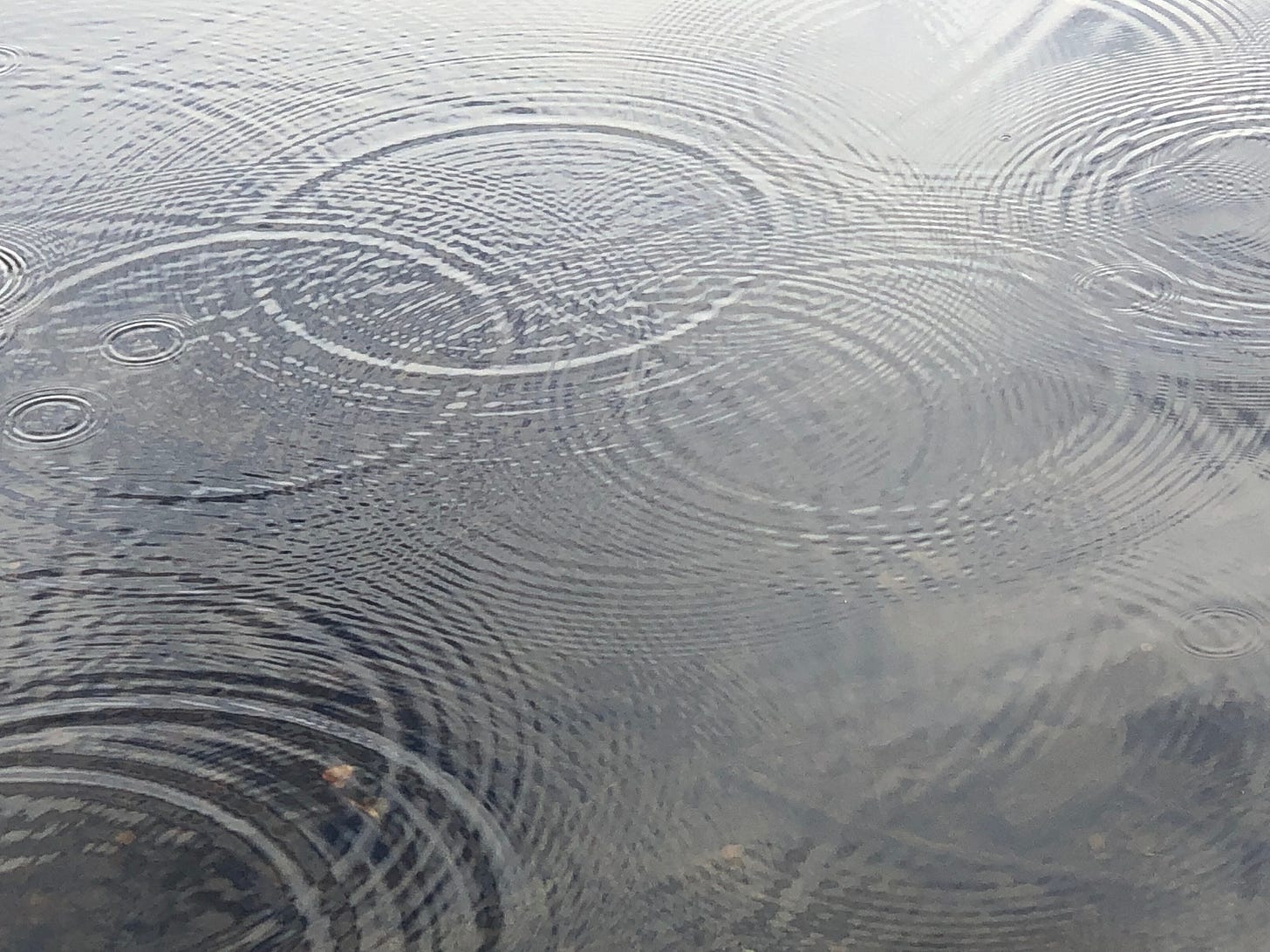
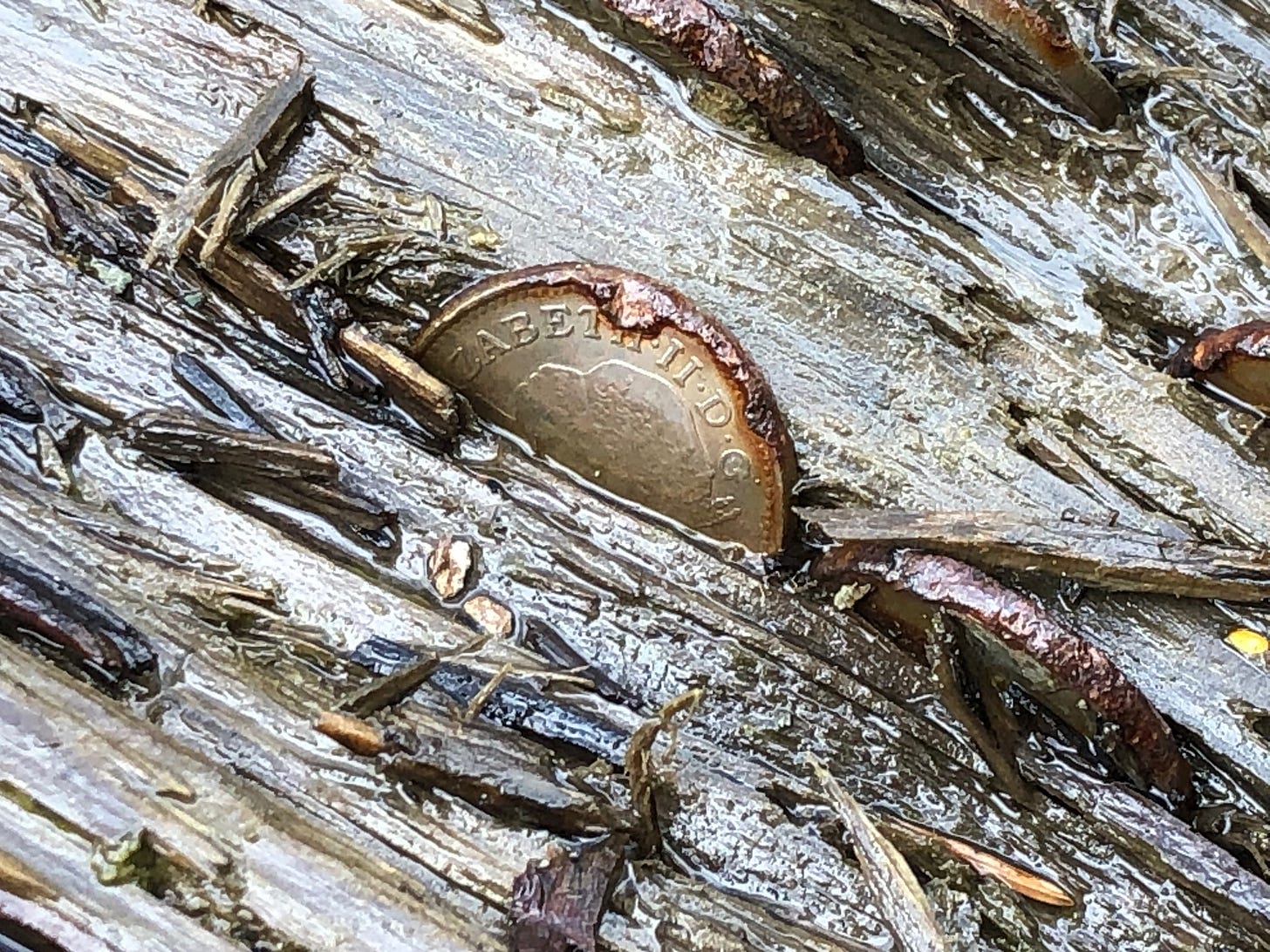
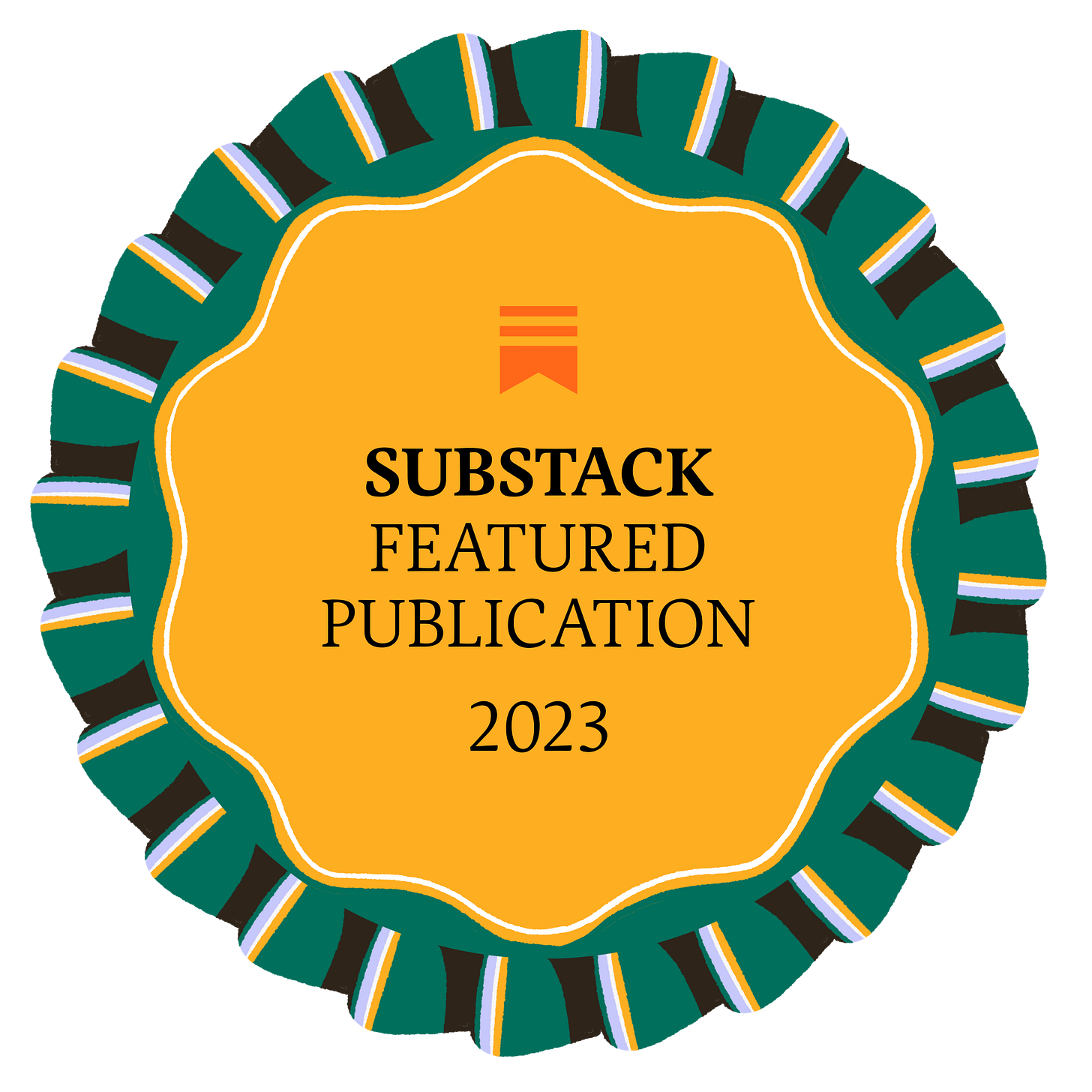
Ah yes! Why not walking widdershins? It is getting near that time of October after all. And I never considered Friday the 13th unlucky either, and just a few days ago, a black cat stopped to greet me as I crossed its path.
I just love this time of year. Perhaps it being my birth month may have something to do with it?
And that coin tree!! Love it! ❤️
I love that version of wish trees! I've never seen anything like that either! Thanks for doing the research! I have seen trees where in winter people attach ribbons and other adornments, sometimes with food for birds, sometimes with Christmas decorations, and other themes pop up. I always assumed people would make a wish when they put on their offering, and that that was what a wishing tree was. But perhaps I've got it wrong. Anyway, delightful tale and it does sound like a perfect day!